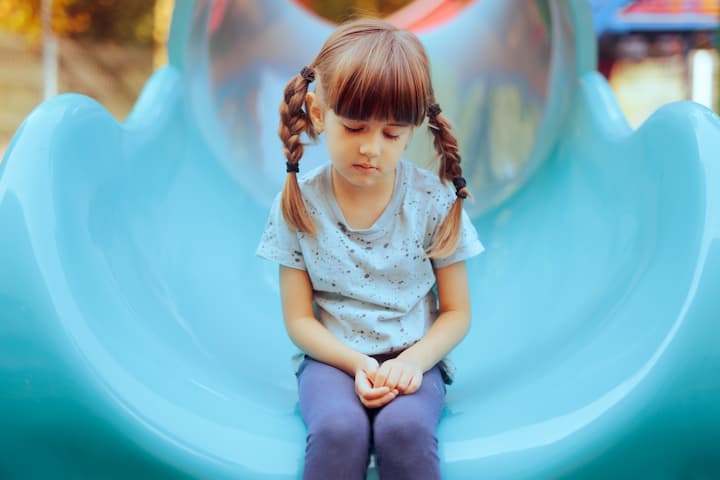
The Ultimate Guide to Easing Back-to-School Anxiety in Children
As the end of August approaches, students across Ireland prepare to return to school. For many, this transition can be both exciting and daunting. While some children eagerly anticipate reconnecting with friends and new teachers, others may grapple with anxiety and fear. A study by the American Psychological Association revealed that children who experience intense anxiety are more likely to skip school, leading to long-term implications on their educational journey (Ginsburg et al., 2009) and further that childhood anxiety disorders cause substantial impairment in peer relationships and academic achievement (Drake and Ginsburg, 2012). Understanding the impact of school-related anxiety and how to support children is crucial and parents need to play an active role in supporting their mental health. Here are some evidence-based strategies:
1. Open Communication
Encourage open dialogues about school and feelings. Ask your child about their concerns and validate their feelings rather than dismissing them. Regular check-ins can create a secure environment that fosters communication. Pinquart, M., & Silbereisen, R. K. (2004) analysed the association between parent-child communication and adolescent mental health across 70 studies. The analysis found that positive and open communication between parents and children is significantly associated with lower levels of depression, anxiety, and behavioural problems in children. The quality of communication, including warmth and understanding, was particularly important in promoting better mental health outcomes.
2. Establish Routines
Routines can bring a sense of predictability and security. Establishing a consistent schedule for morning routines and homework can help children feel more in control. Studies by Dumas et al. (2005) and Brotman et al. (2008) show that children thrive in structured environments, reducing feelings of uncertainty and significantly benefiting children's overall development.
3. Promote Coping Skills
Teaching children coping mechanisms such as mindfulness, breathing exercises, or visualisation techniques can significantly help in managing anxiety. Evidence suggests that mindfulness practices can effectively reduce anxiety levels among school-age children (Zoogman et al., 2015). Consider engaging your child in age-appropriate relaxation techniques, turning stress into a manageable experience.
4. Encourage Gradual Exposure
For children who exhibit significant anxiety, gradual exposure to school settings can be beneficial (Hofmann et al., 2012). Start by visiting the school together, discussing their fears, and slowly reintroducing school-related activities.
5. Be Involved with the School
Maintain close contact with teachers and school staff. Building a collaborative relationship can allow for early intervention if your child’s anxiety escalates. Many schools in Ireland have resources available for parents. The National Educational Psychology Service provide a range of printable resources for parents on supporting children’s mental well-being including managing school-level transitions.
6. Seek Professional Help When Needed
If anxiety becomes overwhelming, seeking professional help from a mental health professional is crucial. Early intervention leads to better outcomes (Beardslee, W. R., Versage, E. M., & Gladstone, T. R. (1998)), enabling children to thrive both academically and emotionally.
The return to school can be a challenging time for many children, given the rise in anxiety and absenteeism. However, parents play a key role in providing the support and understanding their children need. By fostering open communication, establishing routines, and promoting coping skills, parents can help their children navigate the transition more effectively.
As schools reopen, let’s focus on creating an environment where our children feel secure, supported, and capable of overcoming their anxiety.
If you have concerns about your child's well-being, please don’t hesitate to reach out to us and we can provide assistance tailored to your needs- email us at hello@mentalhealth.ie or call 01 611 1719.
Note: The content in this blog is for informational and educational purposes only and is not intended as a substitute for professional medical advice, diagnosis, or treatment. Always seek the advice of your doctor or qualified healthcare provider with any questions you may have regarding a medical condition or treatment.
References:
1. Ginsburg, G. S., et al. (2009). Cognitive-Behavioral Treatment for Adolescents with Generalized Anxiety Disorder: A Randomized Controlled Trial. American Psychological Association.
2. Drake K., Ginsburg G. Family factors in the development, treatment, and prevention of childhood anxiety disorders. Clin. Child. Fam. Psychol. Rev. 2012;15:144–162.
3. Pinquart, M., & Silbereisen, R. K. (2004). "Parent-child communication and adolescents' mental health: A meta-analysis" Journal of Marriage and Family, 66(2),
334-348. DOI: 10.1111/j.1741-3737.2004.00024.x
4. Dumas, J. E., LaFreniere, P. J., & Serketich, W. J. (1995). Meta-analysis of interventions for disruptive behaviour disorders in children. American Journal of Psychiatry, 152(4), 595-604. DOI: 10.1176/ajp.152.4.595
5. Brotman, L. M., Gouley, K. K., Huang, K. Y., Rosenfelt, A., O'Neal, C., Klein, R. G., & Shrout, P. (2008). Preventive intervention for preschoolers at high risk for antisocial behaviour: Long-term effects on child physical aggression and parenting practices. Journal of Clinical Child & Adolescent Psychology, 37(2), 386-396. DOI: 10.1080/15374410801955814
6. Hofmann, S. G., et al. (2012). The Efficacy of Cognitive Behavioral Therapy: A Meta-Analysis. Cognitive Therapy and Research.
7. Zoogman, S., et al. (2015). Mindfulness Interventions for Children and Adolescents: A Meta-Analysis. Mindfulness.
8. National Educational Psychology Service (NEPS) Guidelines, Tips and Handouts for Parents and Teachers healthhttps://www.gov.ie/pdf/?file=https://assets.gov.ie/247678/a7bf63f5-1283-4cd0-a2e3-3cde72c5d75c.pdf#page=null
9. Beardslee, W. R., Versage, E. M., & Gladstone, T. R. (1998)."The prevention of depression and anxiety in at-risk adolescents: A randomized controlled trial" Journal: Journal of the American Academy of Child & Adolescent Psychiatry, 37(9), 990-998. DOI: 10.1097/00004583-199809000-00018



